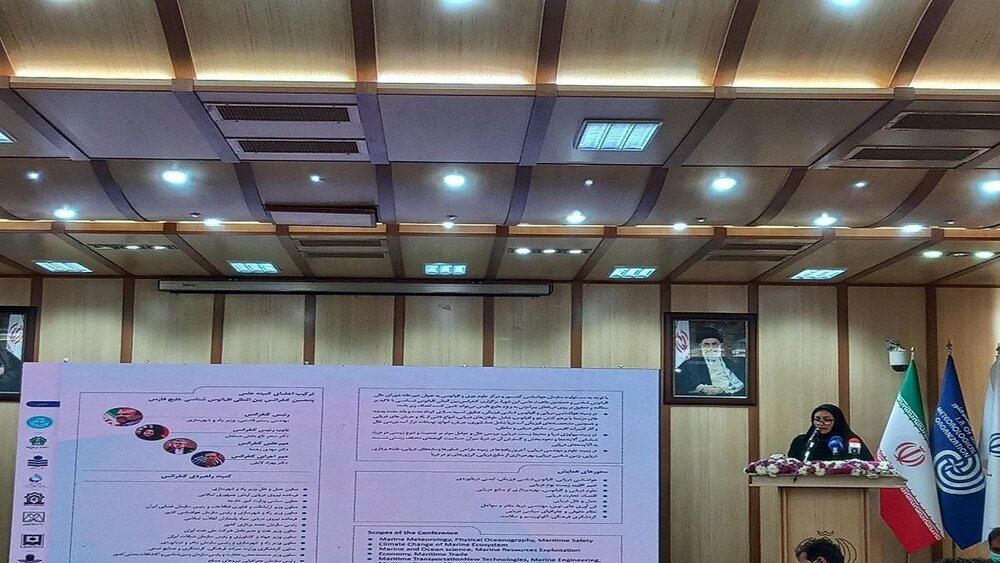Intl. Conference on Persian Gulf Oceanography underway in Tehran

TEHRAN – The 5th International Conference on Persian Gulf Oceanography kicked off in Tehran on Monday.
The conference has been organized by the Iran Meteorological Organization (IMO) in collaboration with the Ministry of Industry, Mining, and Trade, the Ministry of Foreign Affairs, the Ministry of Oil, Ports and Maritime Organization, Department of Environment, the Ministry of Agriculture, and the Ministry of Cultural Heritage, Tourism, and Handicrafts.
Sahar Tajbakhsh, head of the IMO, said in the opening ceremony said that the purpose of the conference was to use the scientific capacity of elites and executive experiences; emphasizing the importance of constant monitoring of coastal, offshore, and international waters.
The issue of sea, ocean, and reconnaissance are very important to the country in terms of maritime, security, and economic fields, so we must prioritize the study of oceanographic sciences and climate change, she highlighted.
Emphasizing that climate change is also a very important and sensitive issue in the world that has become a vital issue among governments, she stated that oceanography and related fields are now on the agenda of the United Nations, as well as countries such as Finland, Ukraine, Iraq, Belarus, and Azerbaijan, due to climate change impact increase in recent years.
The two-day conference is attended by representatives from Belarus, Finland, Azerbaijan, Iraq, Ukraine, Pakistan, and Russia, as well as officials related to marine and port development.
“Marine meteorology, physical oceanography, maritime safety”, “climate change of marine ecosystem”, “marine and ocean science, marine resources exploitation”, “economy, maritime trade”, “maritime transportation new technologies, marine engineering, maritime ports and beaches”, “legal system and maritime political geography”, and “cultural tourism, ecotourism, and health” are the topics being discussed during the vent.
Mehdi Rahnama, Scientific Secretary of the 5th International Conference on Persian Gulf Oceanography, stated that the event is held with the cooperation of professors from more than 50 universities in the country.
Over 100 papers have been delivered to the secretariat and about 30 of which are approved to be presented at the conference, he further added.
Precious marine environment
The Persian Gulf is a valuable water body in terms of ecosystem and biodiversity but has been affected severely due to different depleting factors, including oil pollution, extraction, and transportation.
The Persian Gulf has an area of about 241,000 square kilometers. Its length is some 990 km, and its width varies from a maximum of about 340 km to a minimum of 55 km in the Strait of Hormuz.
It has its own environmental characteristics, as it is a semi-closed sea, aging 15,000 years, with an average depth of 35 meters, while being high salty with severe heat fluctuations, and an annual evaporation rate of 140 cm.
There are 2 species of dolphins and whales in the area, in addition to 1,100 species of fish and 5 species of turtles, the Persian Gulf also hosts the second largest population of manatees, 232 seaweed species, and 4 million migratory birds annually, but today 240 important species and many habitats are under threat.
Out of the 21 largest oil spills in the world, 7 cases occurred in this water body, which is threatening the aquatic ecosystem.
Hassan Mohammadi, the coordinator of the Regional Organization for the Protection of Marine Environment (ROPME), said in December 2019 that studies show that as the current environmental issues continue, by the end of the century, about 20 percent of native species in the Persian Gulf will be extinct and 10 percent of new species that might be invasive will replace them.
FB/MG
Leave a Comment